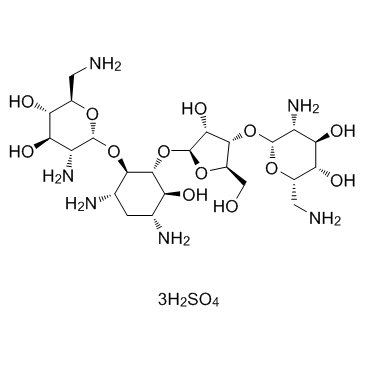The astroglial reaction along the mouse cochlear nerve following inner ear damage.
Zhengqing Hu, Baofu Zhang, Xuemei Luo, Lei Zhang, Jue Wang, Dennis Bojrab, Hui Jiang
文献索引:Otolaryngol. Head Neck Surg. 150(1) , 121-5, (2014)
全文:HTML全文
摘要
Determine how the astroglial cells of the peripheral and central nervous system transitional zone (PCTZ) react to sensorineural hearing loss using a mouse cochlear nerve model.Prospective, basic science.Research laboratory.Neomycin was injected into the mouse inner ear to cause chemically induced hearing loss. Auditory brainstem responses (ABRs) were used to determine hearing threshold shifts after neomycin treatment. Immunofluorescence was used to detect the expression of proteins specific for hair cells, spiral ganglion neurons, astrocytes, and the myelin components of both oligodendrocytes and Schwann cells.ABR threshold shifts and immunofluorescence results supported that hair cells and spiral ganglion neurons were damaged in neomycin-treated mice. Immunofluorescence showed the peripheral and central nervous system (PNS and CNS) transitional zone of the cochlear nerve at the interface of the myelin components of the PNS and CNS. In the control mice, the expression of glial fibrillary acidic protein (GFAP) was observed proximally to the PCTZ closer to the CNS, which is their normal location. However, in neomycin-treated animals the expression of GFAP was detected distally to the PCTZ and was found close to the spiral lamina level in the basal cochlear turn, suggesting that GFAP-expressing astrocytes migrated across the PCTZ and reached the PNS.The GFAP positive astrocyte processes extended across the PCTZ along the mouse cochlear nerve following chemically induced sensorineural hearing loss.
相关化合物
| 结构式 | 名称/CAS号 | 分子式 | 全部文献 |
|---|---|---|---|
 |
硫酸新霉素
CAS:1405-10-3 |
C23H52N6O25S3 |
|
Effect of selective decontamination on antimicrobial resista...
2013-04-01 [Lancet Infect. Dis. 13(4) , 328-41, (2013)] |
|
Clearance of nasal Staphylococcus aureus colonization with t...
2012-12-01 [Journal. of. Drugs in. Dermatology. 11(12) , 1490-2, (2012)] |
|
Acute otitis externa: an update.
2012-12-01 [Am. Fam. Physician 86(11) , 1055-61, (2012)] |
|
Effects of metal exposure on motor neuron development, neuro...
2015-01-01 [Neurotoxicol. Teratol. 50 , 33-42, (2015)] |
|
"In-bone" utricle cultures--a simplified, atraumatic techniq...
2013-02-01 [Otol. Neurotol. 34(2) , 353-9, (2013)] |